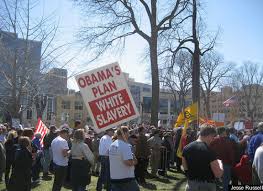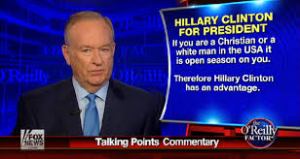The Supreme Court’s decision in Texas Department of Housing and Community Affairs Et Al v. Inclusive Communities Project, Inc. Et Al has just been announced. By a vote of 5-4, the application of a disparate impact standard to determine violation of the federal Fair Housing Act by state housing authorities was upheld. As recent events in McKinney, Texas (one of the communities under scrutiny by the Inclusive Communities Project in the cases leading up to this decision) demonstrate, the Fair Housing act is still urgently needed, and cannot function to promote even a meager measure of housing integration without the disparate impact standard. Justice Anthony Kennedy wrote the decision, joined by Ginsburg, Breyer, Sotomayor, and Kagan, while Samuel Alito authored a dissent joined by Scalia, Thomas, and Roberts, with Thomas authoring a separate dissent. I’ll be looking forward to reading that one (update: holy cow he argues Griggs is illegitimate and therefore disparate impact standards in civil rights law should be thrown out) and reporting a bit more on the whole business later.
update 1:
Thoughts on the impact of the ruling: It still won’t do to get too excited, because of the inherent limits of the Fair Housing Act. The majority decision indeed affirms that courts applying a disparate impact standard to determine the legality of a public or private practice must respect legitimate business interests, and places the burden of proof on plaintiffs (those charging discrimination) to show that there is an alternative practice that also serves the needs of the entity in question. Why? because
Disparate-impact liability must be limited so employers and other regulated entities are able to make the practical business choices and profit-related decisions that sustain the free-enterprise system.
This becomes inherently problematic in the area of housing because in the vast majority of housing procured through private production and financing, the profit-related decisions that occur under “free enterprise” are inherently racialized. For a suburb like McKinney, which depends fiscally on maintaining the taxable value of privately owned housing, cordoning off low-income housing from more valued properties is exactly such a decision. For a developer, racism likewise makes profit dependent on conformity to the racism embedded in the real estate market, which is elastic enough to accommodate some integration, but only up to very low limits. This has been explored by Reynolds Farley. As Maria Krysan (with Mick Couper, Farley, and Tyrone Forman) found, white opinion of Black Americans and of Black-inhabited neighborhoods was influential independent of social class in setting white neighborhood preferences. This fact of the housing market–that social class creates buying power, but racism helps define desirability and therefore value, helps to create racially isolated islands of affluence as a characteristic socio-spatial form of contemporary metropolitan America (as I’ve written about north Fulton County, Georgia). Seminal works like Arnold Hirsch’s Making the Second Ghetto and more recent ones including Carl Nightingale’s Segregation: A Global History of Divided Cities emphasize this as a key part of American and global urbanization.
Accordingly, when Anthony Kennedy writes for the Court’s majority that
Courts should avoid interpreting disparate-impact liability to be so expansive as to inject racial considerations into every housing decision
a glaring asymmetry is evident. Racial considerations already affect housing decisions. The question is merely which racial considerations can be acknowledged.
In the years ahead, pressure to find other means of accomplishing the goal will doubtless continue. Given that the ruling was only 5-4 in favor of maintaining even a standard so deferential to what Nightingale calls the “racist theory of property value” as a core business practice, the Fair Housing Act will continue to face jeopardy. This is reflected in what Kennedy offers as a statement of purpose for the decision, which waters down the core purpose of the Fair Housing Act–preventing racial discrimination–to place it on equal footing with other public and private goals in the housing market:
Were standards for proceeding with disparate-impact suits not to incorporate at least the safeguards discussed here, then disparate-impact liability might displace valid governmental and private priorities, rather than solely “remov[ing] . . . artificial, arbitrary, and unnecessary barriers.” Griggs, 401 U. S., at 431. And that, in turn, would set our Nation back in its quest to reduce the salience of race in our social and economic system.
Here, what Kennedy is doing (with deliberate obtuseness, I think), is separating the normal operation of “valid governmental and private priorities” from illegitimate barriers to housing access and housing outcomes. The reason that a much stronger Fair Housing Act is needed, and the reason that it must be superior to some of those profit- and fiscally-driven priorities, is that the normal achievement of those priorities has historically entailed, and continued to entail, racial segregation.
update 2:
There is some particularly significant language used by the Department of Housing and Community Affairs (the defendant) that bears some attention. That is the attempt to draw a distinction between actions taken “because of race” and racially impactful actions. What the Department wanted the Court to accept was that only decisions driven by racial bigotry, apart from any consideration of property value, development interests, the cost of land for low-cost housing, or the housing market, could create legal liability:
Emphasizing that the FHA uses the phrase “because of race,” the Department argues this language forecloses disparate-impact liability since “[a]n action is not taken ‘because of race’ unless race is a reason for the action.” Brief for Petitioners 26.
Kennedy’s decision rejects this argument, but it does it on statutory grounds, noting the consistency of usage in the Fair Housing Act as amended with other civil rights legislation upheld by the courts. This ignores a much better criticism, which is that, from the first invention of racial classification, race itself has not been the reason for racial discrimination. Race as a socially constructed category has been invented and deployed in the interests of allocating material, social, and symbolic resources. Racism as a social system coheres in the intersection of identification and differential allocation. Race itself is never “the reason” for anything. But to say that a group of neighbors organizing to keep Black residents out is not racism because the neighbors are seeking to defend property value would be complete idiocy. People have never discriminated because of any intrinsic power of “race” but because racial categorization is instrumental in preserving advantage and institutionalized as a set of social cognitions.
I’m critiquing Kennedy’s opinion here because it displays a troubling tendency to fudge, per Barbara J. Fields and Karen Fields’ discussion in Racecraft, this distinction between race and racism. In describing permissible (because ostensibly non-racial) criteria for evaluating the appropriateness of allocating housing credits, Kennedy drops this:
If a real-estate appraiser took into account a neighborhood’s schools, one could not say the appraiser acted because of race.
It simply strains credulity that a Supreme Court Justice would blithely separate the questions of school quality, property appraisal, and racial segregation; schools have been central to the dynamics of white flight and metropolitan segregation, which was exactly what the Michigan Supreme Court found before the US Supreme Court created the atrocious doctrine that segregation patterns that cross school district boundaries are an innocent coincidence.
update 3:
There’s something weird going on in this passage, too:
If the specter of disparate-impact litigation causes private developers to no longer construct or renovate housing units for low-income individuals, then the FHA would have undermined its own purpose as well as the free-market system.
First of all, Kennedy seems to be suggesting that the fear of a Fair Housing lawsuit, rather than the lack of profitability, is the main deterrent to the construction of low-income housing. I’ll wait for you to stop giggling and read on.
Second, is Kennedy really asserting that the purpose of the Fair Housing Act is to encourage the construction or renovation of low-income housing units? Federal low-income housing policies are aimed at doing that, but the language of the statute, around which the entirety of the opinion resolves, and as the opinion itself states,
addresses the denial of housing opportunities on the basis of “race, color, religion, or national origin.”
At first I thought that Kennedy had switched to refer to the Federal Housing Administration as an agency, which would make sense in terms of the focus on LIH as a policy goal, but no. FHA as an acronym refers to the Fair Housing Act throughout the opinion. So, is Kennedy conflating the civil rights statute with the federal agency? Why would he do that? I couldn’t say for sure, but I think what’s going on here is that Kennedy wants to keep disparate impact, but define huge areas of relief from liability from a judgment based on disparate impact. He does that by fudging the core purpose of the Act–preventing racial discrimination in housing and, under disparate impact, encourage housing integration–with a sometimes-but-not-always related purpose of creating more low-income housing.
And specifically, this links back to Kennedy’s suggestion that reviving inner-city housing and integrating the suburbs are both equally valid and commensurate policy goals:
From the standpoint of determining advantage or disadvantage to racial minorities, it seems difficult to say as a general matter that a decision to build low-income housing in a blighted inner-city neighborhood instead of a suburb is discriminatory, or vice versa.
As a matter of fact, though, this isn’t exactly true. Urban revitalization frequently displaces low-income residents and accompanies racial transition that pushes people of color out, even when a quota of units is set aside for low-income residents (who are frequently made to feel completely unwelcome). And, while suburban integration is not itself a complete path to racial justice, it does tend to integrate minority youth into more complete communities of opportunity. And Kennedy seems to be hinting that if the State of Texas encourages enough of the former, it does not have to do very much of the latter. That makes this a very troubling victory indeed.



